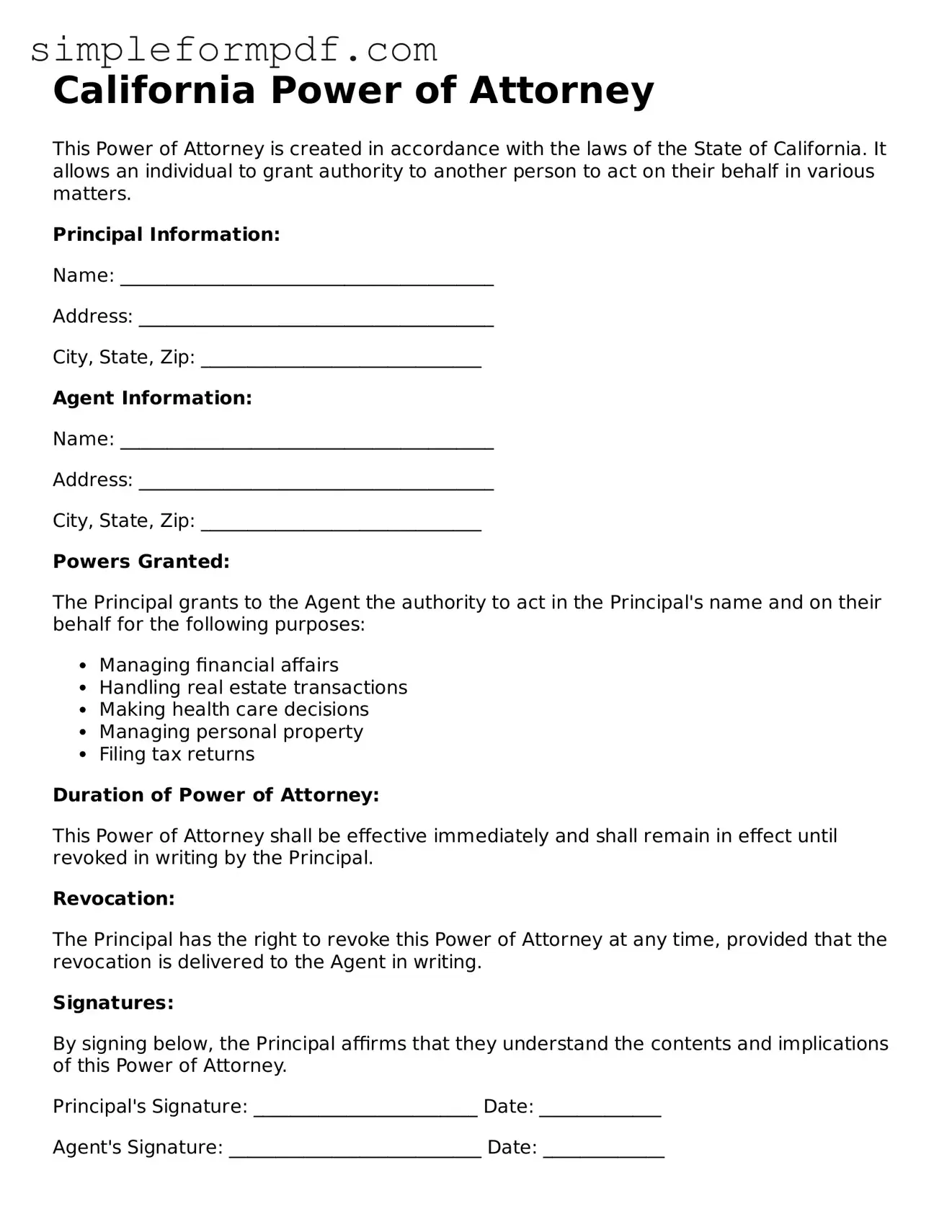California Power of Attorney
This Power of Attorney is created in accordance with the laws of the State of California. It allows an individual to grant authority to another person to act on their behalf in various matters.
Principal Information:
Name: ________________________________________
Address: ______________________________________
City, State, Zip: ______________________________
Agent Information:
Name: ________________________________________
Address: ______________________________________
City, State, Zip: ______________________________
Powers Granted:
The Principal grants to the Agent the authority to act in the Principal's name and on their behalf for the following purposes:
- Managing financial affairs
- Handling real estate transactions
- Making health care decisions
- Managing personal property
- Filing tax returns
Duration of Power of Attorney:
This Power of Attorney shall be effective immediately and shall remain in effect until revoked in writing by the Principal.
Revocation:
The Principal has the right to revoke this Power of Attorney at any time, provided that the revocation is delivered to the Agent in writing.
Signatures:
By signing below, the Principal affirms that they understand the contents and implications of this Power of Attorney.
Principal's Signature: ________________________ Date: _____________
Agent's Signature: ___________________________ Date: _____________
Witness Information:
Witness Name: _____________________________________
Witness Address: ___________________________________
Notary Public:
State of California
County of ____________________
Subscribed and sworn before me on this _____ day of __________, 20__.
Notary Public Signature: _____________________
Commission Number: _________________________
